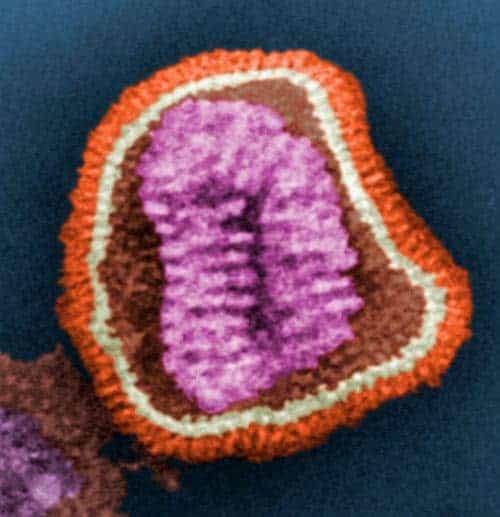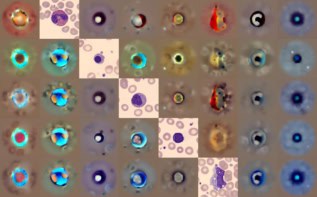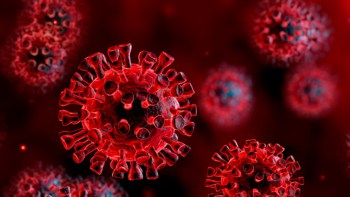
In 1935 Erwin Schrödinger devised his famous thought experiment – in which a cat is both alive and dead at the same time – to highlight the paradoxical nature of quantum mechanics. Now, a group of physicists in Germany and Spain believe that it should be possible to build an experiment in which an actual living creature such as a virus is held in a superposition of quantum states.
Schrödinger imagined a cat being held in an opaque box that also contained a glass vial of cyanide. Next to the vial there were a radioactive source, a Geiger counter and a hammer, set up so that decay would lead to the smashing of the vial and the poisoning of the cat. However, the radioactive source would be so weak that within an hour, say, there would only be a 50:50 chance that decay could take place. Before an observer opens the box and looks inside, quantum mechanics tells us that the radioactive material would be in a quantum superposition of both having experienced a decay and not, and that the cat would therefore also exist in a quantum superposition – of being simultaneously alive and dead.
Schrödinger’s scenario illustrates the seeming irreconcilability between the indeterminate quantum realm and our everyday world of concrete – and living – objects. However, physicists have started to probe the boundary between the quantum and the classical and are finding that relatively large objects can be held in superposition states. Such objects include molecules like fullerene carbon-70, as well as hoops of superconducting material that contain currents circulating in opposite directions at the same time.
Superposition of living creatures?
Now, researchers hope to observe superpositions of even larger “optomechanical” systems – objects, such as tiny mirrors or cantilevers, which respond mechanically when exposed to laser light. It is one such system that Oriol Romero-Isart of the Max Planck Institute for Quantum Optics in Garching and colleagues say could be used to demonstrate the superposition of living creatures.
Their plan is to trap an organism inside an optical cavity using “optical tweezers” – a laser beam tightly focused on a tiny region in space that can confine objects in three dimensions. The radiation pressure of a second laser would then slow down the organism’s centre-of-mass motion so that it exists in its motional ground state. Finally, a single-photon pulse from the second laser would put the organism into a superposition of its ground state and an excited motional state.
The German-Spanish group points out that an organism must satisfy three basic requirements if it is to be placed in a superposition in this way. First, they say, it must approximate a dielectric object so that it is very transparent but still refracts light. This means that when the organism moves, the properties of the optical cavity change, varying the light intensity inside the cavity and therefore the force on the organism, which is what cools it. Second, the organism must be smaller than the wavelength of light used, about 500 nm, so that it can be confined between the peaks and troughs in the light wave. Finally, the organism must be able to withstand extremely low pressures, because the merest trace of air molecules would rapidly lead to the decoherence of its quantum states.
Common flu a candidate
The researchers say that the common influenza virus would be a good candidate for the experiment because it is about 100 nm long and can exist in a vacuum. Alternatively they might use the Tobacco Mosaic Virus, which is 50 nm wide and can also withstand very low pressures. Both viruses are good approximations of dielectric objects.
Romero-Isart and colleagues believe that studying organisms in this way could have profound implications. “We expect these proposed experiments to be a first step to experimentally address fundamental questions,” they write in their paper, “such as the role of consciousness in quantum mechanics, and to make distinctive many-world and Copenhagen interpretations.”
Good news for cats
Maciej Lewenstein of the Institute of Photonic Sciences in Barcelona believes that the experiment is feasible using existing technology and agrees that it could have exciting implications. “Proving that quantum-mechanical phenomena exist at this large scale would open the road to studying the role of quantum mechanics in biology,” he says. However, he cautions that it may be some time before we can understand the relationship between consciousness and quantum mechanics. He also doubts that it will ever be possible to carry out Schrödinger’s experiment as applied to actual cats, which, he adds, “is probably good news for cats”.
UPDATE 11 March 2010: A peer-reviewed version of the paper describing this work has been published at New Journal of Physics 12 033015.



